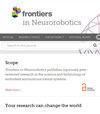Improved object detection method for unmanned driving based on Transformers
IF 2.6
4区 计算机科学
Q3 COMPUTER SCIENCE, ARTIFICIAL INTELLIGENCE
引用次数: 0
Abstract
The object detection method serves as the core technology within the unmanned driving perception module, extensively employed for detecting vehicles, pedestrians, traffic signs, and various objects. However, existing object detection methods still encounter three challenges in intricate unmanned driving scenarios: unsatisfactory performance in multi-scale object detection, inadequate accuracy in detecting small objects, and occurrences of false positives and missed detections in densely occluded environments. Therefore, this study proposes an improved object detection method for unmanned driving, leveraging Transformer architecture to address these challenges. First, a multi-scale Transformer feature extraction method integrated with channel attention is used to enhance the network's capability in extracting features across different scales. Second, a training method incorporating Query Denoising with Gaussian decay was employed to enhance the network's proficiency in learning representations of small objects. Third, a hybrid matching method combining Optimal Transport and Hungarian algorithms was used to facilitate the matching process between predicted and actual values, thereby enriching the network with more informative positive sample features. Experimental evaluations conducted on datasets including KITTI demonstrate that the proposed method achieves 3% higher mean Average Precision (mAP) than that of the existing methodologies.基于变压器的改进型无人驾驶物体检测方法
物体检测方法是无人驾驶感知模块的核心技术,广泛用于检测车辆、行人、交通标志和各种物体。然而,在错综复杂的无人驾驶场景中,现有的物体检测方法仍然面临三个挑战:多尺度物体检测性能不理想、小物体检测精度不够、在密集遮挡环境中出现误报和漏报。因此,本研究提出了一种改进的无人驾驶物体检测方法,利用 Transformer 架构来应对这些挑战。首先,多尺度 Transformer 特征提取方法与通道注意相结合,增强了网络在不同尺度上提取特征的能力。其次,采用了一种结合查询去噪和高斯衰减的训练方法,以提高网络学习小物体表征的能力。第三,采用了一种结合了最优传输和匈牙利算法的混合匹配方法,以促进预测值和实际值之间的匹配过程,从而为网络提供更多信息丰富的正样本特征。在包括 KITTI 在内的数据集上进行的实验评估表明,所提出的方法比现有方法的平均精度(mAP)高出 3%。
本文章由计算机程序翻译,如有差异,请以英文原文为准。
求助全文
约1分钟内获得全文
求助全文
来源期刊

Frontiers in Neurorobotics
COMPUTER SCIENCE, ARTIFICIAL INTELLIGENCER-ROBOTICS
CiteScore
5.20
自引率
6.50%
发文量
250
审稿时长
14 weeks
期刊介绍:
Frontiers in Neurorobotics publishes rigorously peer-reviewed research in the science and technology of embodied autonomous neural systems. Specialty Chief Editors Alois C. Knoll and Florian Röhrbein at the Technische Universität München are supported by an outstanding Editorial Board of international experts. This multidisciplinary open-access journal is at the forefront of disseminating and communicating scientific knowledge and impactful discoveries to researchers, academics and the public worldwide.
Neural systems include brain-inspired algorithms (e.g. connectionist networks), computational models of biological neural networks (e.g. artificial spiking neural nets, large-scale simulations of neural microcircuits) and actual biological systems (e.g. in vivo and in vitro neural nets). The focus of the journal is the embodiment of such neural systems in artificial software and hardware devices, machines, robots or any other form of physical actuation. This also includes prosthetic devices, brain machine interfaces, wearable systems, micro-machines, furniture, home appliances, as well as systems for managing micro and macro infrastructures. Frontiers in Neurorobotics also aims to publish radically new tools and methods to study plasticity and development of autonomous self-learning systems that are capable of acquiring knowledge in an open-ended manner. Models complemented with experimental studies revealing self-organizing principles of embodied neural systems are welcome. Our journal also publishes on the micro and macro engineering and mechatronics of robotic devices driven by neural systems, as well as studies on the impact that such systems will have on our daily life.
 求助内容:
求助内容: 应助结果提醒方式:
应助结果提醒方式:


